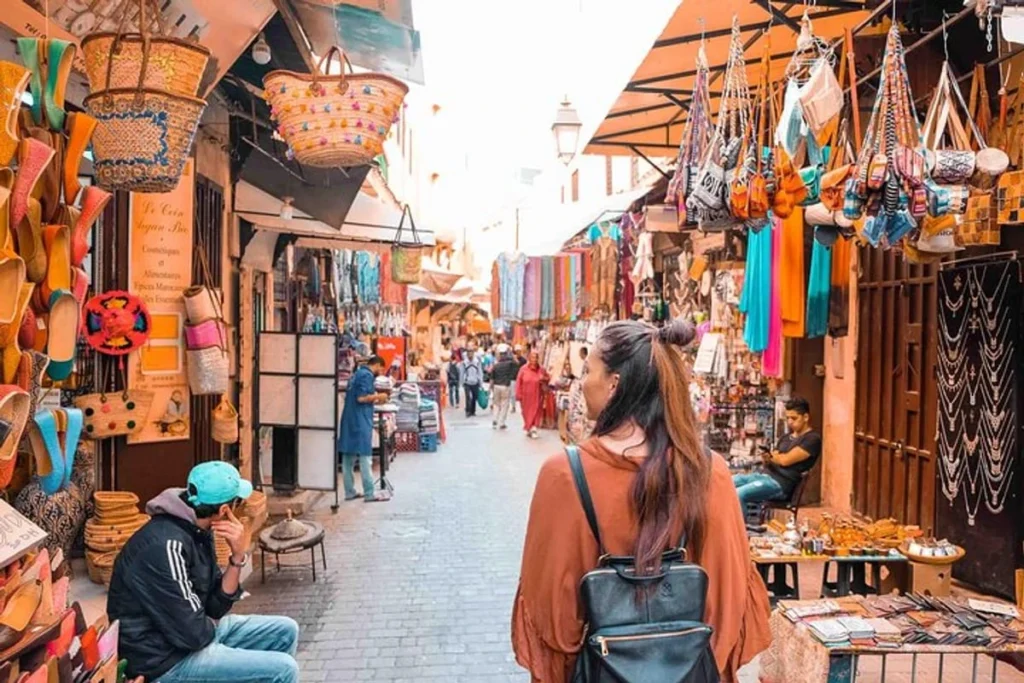Fez, Morocco’s spiritual and cultural capital, is a city steeped in history and tradition. Founded in 789 AD, Fez is one of the oldest imperial cities in Morocco and a UNESCO World Heritage site. This blog post will guide you through the rich history, cultural heritage, and unique experiences that make Fez a must-visit destination.
Fez: A Brief History
Fez was established by Idris I, the founder of the Idrisid dynasty, in 789 AD. Over the centuries, it grew into a significant center of religion, education, and trade. By the 14th century, it had become the capital of the Marinid dynasty and an influential city in the Islamic world. Today, Fez is renowned for its historical landmarks, traditional souks, and vibrant street life.
The Fez Medina: A UNESCO World Heritage Site
The Fez Medina, also known as Fes el-Bali, is the largest car-free urban area in the world, with over 9,400 narrow alleys. This labyrinthine medina is a UNESCO World Heritage site and offers an authentic glimpse into Morocco’s rich history and vibrant culture. As you wander through its maze-like streets, you’ll discover hidden gems and experience the timeless charm of one of the world’s most fascinating urban spaces.
Key Attractions in Fez
1. Al-Qarawiyyin University and Mosque
Founded in 859 AD by Fatima al-Fihri, a woman from the city of Kairouan in present-day Tunisia, Al-Qarawiyyin University and Mosque is the oldest continuously operating university in the world. This iconic institution has been a center of learning and religious study for over a millennium. The mosque’s impressive architecture and the serene courtyards of the university are a testament to the enduring legacy of Islamic scholarship.
2. Bou Inania Madrasa
The Bou Inania Madrasa, built in the 14th century by the Marinid Sultan Bou Inan, is a stunning example of Marinid architecture. This religious school features exquisite zellij tilework, intricate stucco carvings, and a beautiful courtyard with a central fountain. It remains one of the few religious places in Morocco accessible to non-Muslims.
3. Nejjarine Museum of Wooden Arts and Crafts
Housed in a beautifully restored caravanserai, the Nejjarine Museum showcases traditional Moroccan woodworking. The museum’s collection includes intricately carved doors, furniture, and tools, offering insights into the craftsmanship that has been passed down through generations.
4. Chouara Tannery
One of the most famous sites in the Medina is the Chouara Tannery, where traditional leather-making methods have been used for centuries. Visitors can observe the tanners at work from surrounding terraces, watching the process of turning hides into high-quality leather in vibrant dyeing vats. A tip for visitors: the tannery has a strong smell, so be sure to take some mint leaves to hold under your nose.
Exploring the Souks and Markets
The souks of Fez el-Bali are a sensory delight, brimming with spices, textiles, ceramics, leather goods, and more. The bustling markets provide a vibrant atmosphere where visitors can experience the daily life of the medina and shop for authentic Moroccan souvenirs. Some popular items to look out for include:
- Babouches: Traditional Moroccan slippers made from leather.
- Argan Oil: High-quality oil used for cooking and skincare.
- Moroccan Spices: Aromatic spices essential for local dishes.
- Taznakht Rugs: Beautiful hand-woven rugs unique to Morocco.
Spiritual Heritage and Religious Sites
Fez is rich in spiritual heritage, with numerous religious sites that showcase the city’s diverse history. Key sites include:
- Zaouia of Moulay Idriss: A peaceful place of worship and reflection.
- Al-Qarawiyyin Mosque: One of the oldest universities in the world, steeped in tradition.
- Jewish Quarter: A vibrant neighborhood that tells the story of Jewish life in Fez.
- Almoravid Tombs: Beautiful gardens that honor the city’s historical figures.
Cultural Events and Festivals
Fez hosts several cultural events and festivals throughout the year, including the Fez Festival of World Sacred Music, which invites visitors to experience deep spiritual connections through various performances that share universal themes. Other events, like the Fantasia, highlight traditional Moroccan horse riding skills and vibrant costumes, immersing visitors in the region’s heritage.
Practical Tips for Visiting Fez
- Best Time to Visit: Spring (March–May) or fall (September–November) for pleasant weather.
- What to Wear: Respectful attire (shoulders and knees covered) is appreciated, especially in religious sites.
- Getting Around: Hire a local guide to navigate the medina’s maze-like streets.
- Local Cuisine: Sample traditional Moroccan dishes like tagine, couscous, and briouates, paired with a glass of mint tea.
Conclusion
Fez is a city that captivates visitors with its rich history, vibrant culture, and unique experiences. From the ancient medina and its bustling souks to the spiritual sites and cultural festivals, Fez offers something for everyone. Plan your visit to this enchanting city and immerse yourself in the heart of Moroccan heritage.

